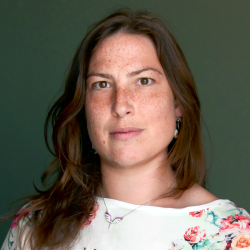Staff
Grandi, Federica
PhD Student
Phone: (+34) 607 981 817
E-mail: fgrandi@iphes.cat
Sponsor: FI Agaur Grant

Bachelor degree in Environment, Nature and Cultural Heritage Sciences (Universitá degli Studi di Ferrara, Italy) in 2012, with a dissertation in paleontology. From this study I was able to publish my first article “Grandi & Bona 2017, Prominatherium dalmatinum from the Late Eocene of Grancona (Vicenza, NE Italy). The oldest terrestrial mammal of the Italian peninsula” in the scientific journal of Comptes Rendus Palevol.
Meanwhile I enrolled in the Double Degree Master in Quaternary, Prehistory and Archaeology, consisting of one academic year at the University of Ferrara and one year at the Istituto Politécnico de Tomar (Portugal). I graduated in 2015 with the taphonomic study of the sandy layers 6-9 from the site of Isernia la Pineta (Italy) and the results were presented at the 8th National congress of Zooarchaeology (Lecce, Italy) from which a publication in the acta followed: “Thun Hohenstein et al. 2019, Nuovi dati archeozoologici dal sito di Isernia La Pineta (Molise, Italia)”.
I later enrolled in the Erasmus Mundus Master degree of Quaternary, Prehistory and Archaeology at the Universitat Rovira i Virgili (Spain) where I started my project on the Pliocene deposit of Camp dels Ninots (Spain). From my second master I applied histotaphonomy on two individuals of Tapirus arvernensis and the results have been published by the beginning of my PhD in the scientific journal Historical Biology: “Grandi et al. 2022, Exceptional preservation of large fossil vertebrates in a volcanic setting (Camp dels Ninots, Spain)”.
I am now the beneficiary of a Predoctoral Fellowship (FI-AGAUR-2022) with the financial sponsorship of the Generalitat de Catalunya, under the co-supervision of Dra. Isabel Cáceres and Dr. Bruno Gómez de Soler.
Current project
I am specializing in fossil diagenesis of osteological material, including macroscopic alterations and their chemical characterization. My project consists in the complete taphonomic analysis of the three million years old deposit of Camp dels Ninots, including spatial distribution of the macrovertebrates recovered.
This site is considered a Lagerstätte, a deposit presenting exceptional preservation both in the quantity and quality of the fossil encountered. The anatomically connected individuals recovered in Camp dels Ninots site represent a perfect opportunity to investigate decomposition and preservation patterns that occur to osteological material after the moment of death. For this purpose, different analyses will be performed on samples recollected from all the individuals of macrovertebrates recovered until now (25), plus samples from the microvertebrates (frogs and fishes) that were naturally living in the lake.
The final objective of this project is to shed light on the conditions that led to this exceptional preservation and also the relationship with the volcanic context in which the deposit formed.



